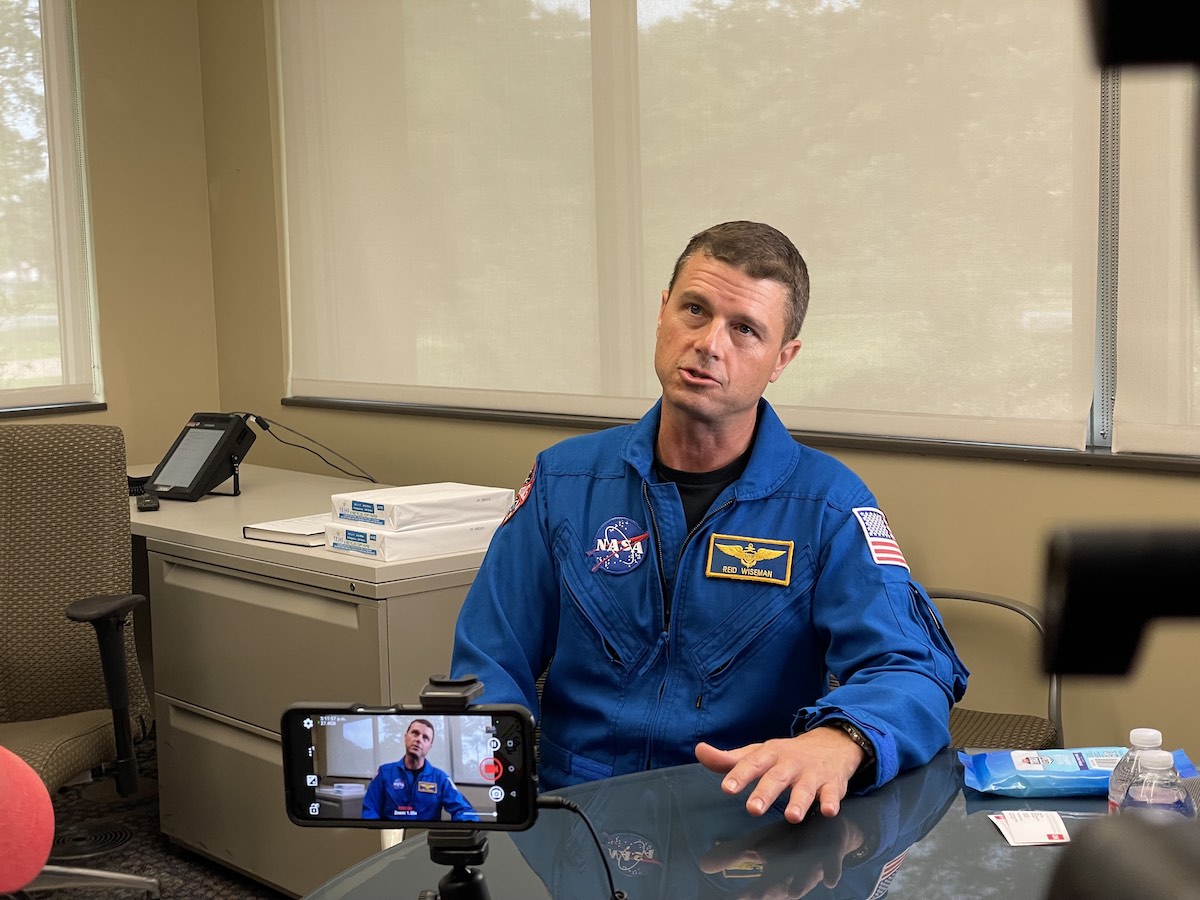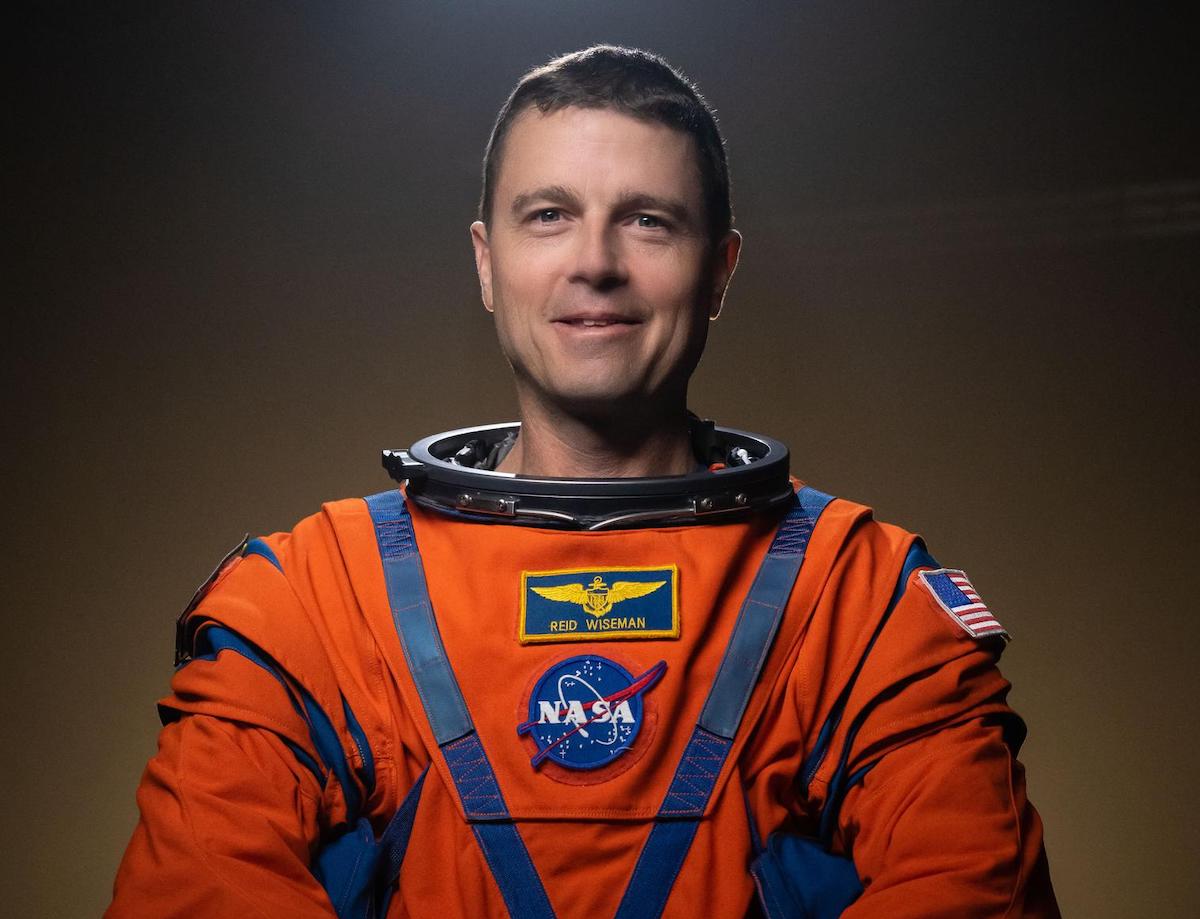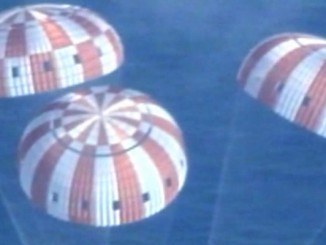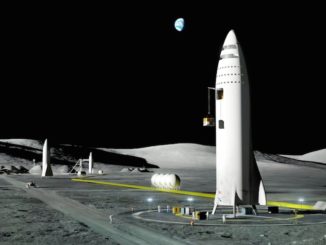Reid Wiseman, a veteran U.S. Navy test pilot and former chief of NASA’s astronaut corps, will lead the four-person crew assigned to the Artemis 2 mission to carry people to the vicinity of the moon for the first time in more than 50 years.
In a joint interview with Spaceflight Now and Space.com, Wiseman said Monday he views the crew’s job as making sure NASA’s Orion spacecraft is ready for more demanding missions later this decade to support moon landings and assembly of a space station called the Gateway in lunar orbit.
Artemis 2 will be the first piloted flight of NASA’s Artemis program, which aims to land astronauts on the lunar surface later this decade as a stepping stone before eventual human missions to Mars.
Under NASA’s Artemis architecture, astronauts on moon landing missions will take off from Earth atop NASA’s Space Launch System heavy-lift rocket, fly into an an elongated halo-like orbit around the moon on an Orion capsule, then link up with a human-rated lander for the trip to and from the lunar surface. The astronauts will then return to Earth in the Orion spacecraft.
Before attempting a lunar landing, NASA will send an Orion spacecraft with four astronauts on a voyage around the far side of the moon on Artemis 2, a roughly 10-day mission planned to blast off no earlier than November 2024. NASA announced the crew members for Artemis 2 Monday in Houston.
“Artemis 2 is all about Artemis. It is not about Artemis 2,” Wiseman said. “It is going out and checking out SLS and Orion, making sure Orion is as ready as it possibly can to do a crewed landing or to start assembling Gateway, or whatever the agency needs us to go do next, but it is looking at those next crews and how can we best posture Orion for them.”
NASA’s current plans call for launching the Artemis 3 mission no earlier than late 2025, but NASA’s inspector general has said that schedule is likely to face delays because the human-rated moon landing vehicle and new spacesuits won’t be ready by then. SpaceX has a contract with SpaceX to develop a derivative of the company’s privately-owned Starship rocket as a human-rated lander, and with Axiom Space to develop new spacesuits designed with life support capabilities and flexibility for astronauts walking on the moon.

NASA and its international partners — primarily Canada, the European Space Agency, and Japan — also plan to construct a space station called Gateway in orbit round the moon. The Gateway will be about one-sixth the size of the International Space Station in low Earth orbit.
Wiseman, 47, is a native of Baltimore who earned engineering degrees from Rensselaer Polytechnic Institute and Johns Hopkins University. He logged more than 500 aircraft carrier landings in his Navy career as an F-14 and F/A-18 fighter pilot, and graduated from U.S. Naval Test Pilot School before joining NASA’a astronaut corps in 2009. Wiseman, a father of two daughters, flew to the International Space Station as a flight engineer on a Russian Soyuz spacecraft in 2014, spending 165 days in orbit and venturing outside the complex for two spacewalks.
On Artemis 2, Wiseman and his three crewmates will strap into seats aboard NASA’s Orion spacecraft on top of the 322-foot-tall (98-meter) SLS moon rocket. The huge launcher will blast off from pad 39B at Kennedy Space Center in Florida with 8.8 million pounds of thrust — more power than any human-rated rocket in history — from two solid rocket boosters and four hydrogen-fueled main engines.
The moon rocket will initially place the Orion spacecraft into an elliptical high-altitude orbit stretching some 46,000 miles (74,000 kilometers) from Earth at its farthest point, beyond the altitude of GPS navigation satellites or geostationary data relay spacecraft. After the Orion capsule deploys from the SLS moon rocket, Wiseman will take the controls of Orion to re-approach the SLS upper stage for a rendezvous and proximity operations demonstration, showing the ship’s ability to maneuver around another spacecraft.
Rendezvous operations will be required on future Artemis missions to dock with a moon landing craft and the Gateway space station in orbit around the moon.
After a day of checkouts to make sure Orion’s life support systems are functioning as designed, Orion’s service module engine will ignite to propel the crew on a four-day outbound trek to the moon. The Artemis 2 crew will swing 6,400 miles (10,300 kilometers) beyond the far side of the moon, farther from Earth than any humans before.

“I’m looking forward to being those first humans that get to sit in Orion and really look at it, not from the perspective of can it get this job done, but can it get the whole job done?” Wiseman said. “I think we are really fired up for that because we know Artemis goes to the moon, and then humanity goes to Mars, and that gets us going.”
Wiseman will be joined on Artemis 2 by pilot Victor Glover, also a veteran of one long-duration flight on the International Space Station. NASA astronaut Christina Koch, who holds the record for the longest single spaceflight by a woman, will be a mission specialist. Canadian astronaut Jeremy Hansen, a spaceflight rookie, will be the fourth crew member on Artemis 2.
“It will be amazing to manually fly, but it is very important to me that Victor flies, that Jeremy flies, and that Christina flies,” Wiseman said. “I want as many human hands on this vehicle as possible because this is not being built for a couple of test pilots. This vehicle is being built to send humanity to the moon and on to Mars, and that is the goal.”
No humans have flown to the moon since the last Apollo mission in December 1972.
Artemis 2 follows NASA’s Artemis 1 mission last year, an unpiloted 25-and-a-half day test flight that marked the first-ever launch of the SLS moon rocket, and the first time an Orion spacecraft flew into deep space.
“I was nervous this morning for the announcement, so am I gonna be nervous for this mission? Absolutely,” Wiseman said Monday. “But I always have found that that nervousness, that adrenaline, it brings you up and if it’s managed, it allows you to focus. And just being with Christina, Victor Jeremy today, my crewmates, I already see how we manage each other’s adrenaline a little bit, our stress a little bit.
“I can’t wait to go do this mission with those three, and then to talk to our flight controllers and mission control, our flight directors on the loops and our CAPCOMs (capsule communicators). It’s gonna be an awesome team.”
Email the author.
Follow Stephen Clark on Twitter: @StephenClark1.



